Woodcarving tools overview

Wood carving is one of the oldest decorative arts that has survived to this day. In the days of ancient Russia, this occupation was considered quite difficult, since there were no technologies that exist at the present time, and there was also a limited set of tools, thanks to which you can create the most incredible patterns on a wood surface.
Fortunately, today technology has made great strides forward, and anyone can easily master this skill and delight others with their work. But in addition to skill and talent, it is necessary to acquire suitable tools, without which the process of wood carving will be simply impossible.

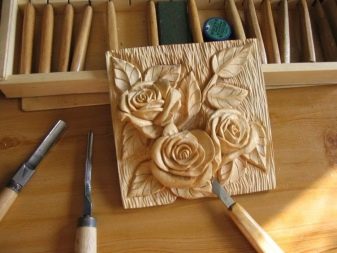
Peculiarities
The toolbox of wood carving masters is quite wide, since one or another element is needed to perform certain actions. Since the carving process itself is divided into several types, you will need the appropriate tool to complete each of them.
In this regard, it becomes clear that the arsenal of a real professional is very wide and deserves special attention. Consider what tools are needed for woodcarving, how they differ and what work they are intended for.
In addition, it is necessary to carefully study the features of the choice of instruments and the nuances of caring for them.
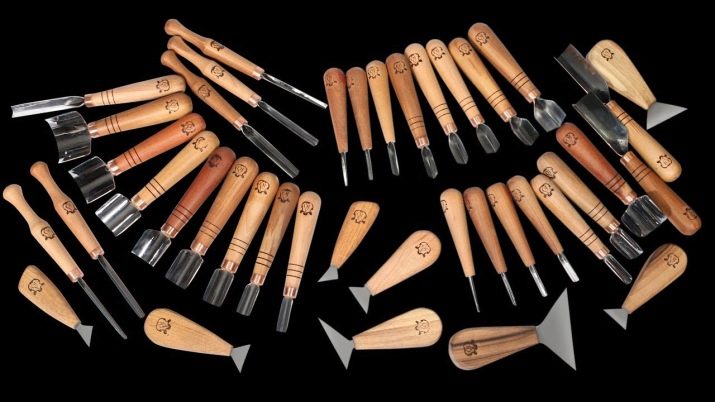
Views
There are many varieties of woodcarving tools that perform one function or another, and this is their distinguishing feature. It is worth considering each of them separately, but for convenience, they can be divided into two main groups: tools that work from electricity and through manual interaction.
It is worth noting that both groups are actively used to this day, and some craftsmen even prefer hand tools.
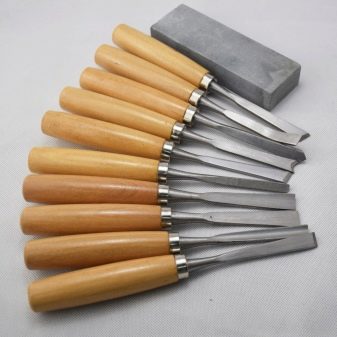
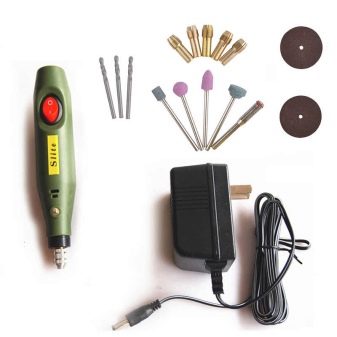
Electrical
Perhaps the most widely used electric tool is the drill. The dimensions of this unit are so diverse that the assortment makes it easy to choose the right model depending on the amount of work. In addition, in addition to models operating from a direct connection to the network, there are also small mobile versions, which are powered by rechargeable batteries. Also, the drill has many attachments, so the range of its use is very wide.
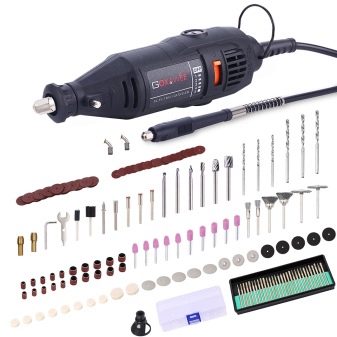
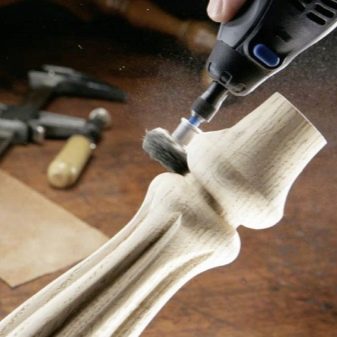
The electric jigsaw is also in fairly high demand, given that its functionality equates to hand tools such as a fishnet or bow saw. Due to the fact that the device has electronic control and speed control, its vibration is minimal, which means that the movements will be more accurate. Also, the device allows you to change the sawing element and select the appropriate option with certain teeth.
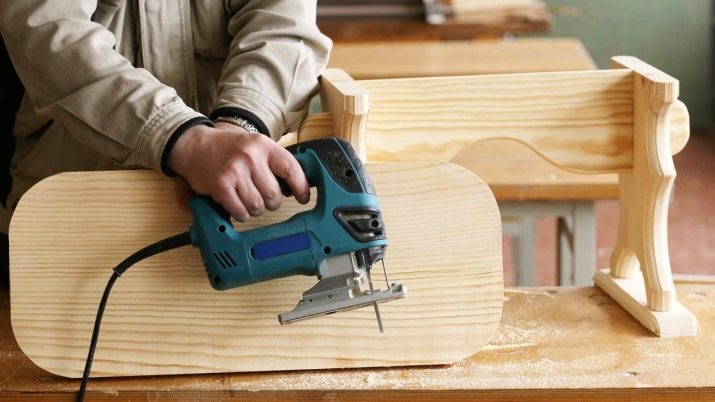
To chamfer, cut edges and grooves, and select a quarter, you should use a hand-operated electric milling machine. In some cases, this tool is used to make decorative screw threads.
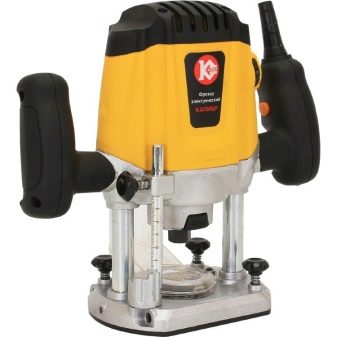
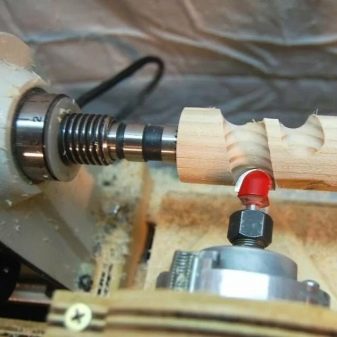
When a master needs to cut a wood element in any direction and at any angle, while maximizing the safety of his life and health, he should use a circular or circular saw. Some models are equipped with an electronic control system that allows you to start smoothly and gradually increase the speed of rotation for a more accurate cut.
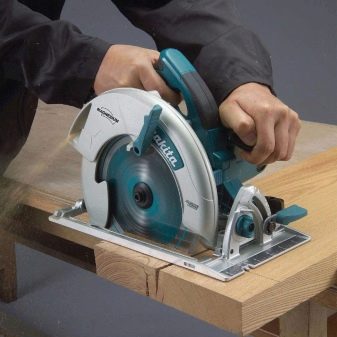
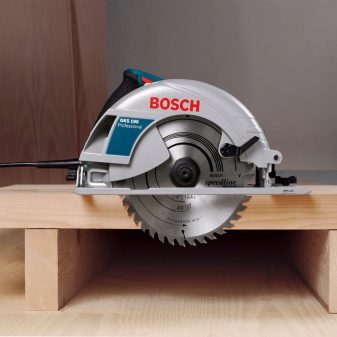
Fitting a wooden element to certain parameters and trimming it is done using an electric plane. Due to the fact that the knife block has a special barrier, the master, the product and the elements of the device itself are maximally protected from damage.
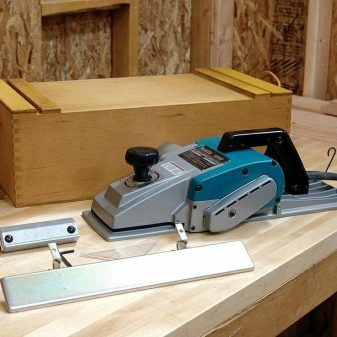
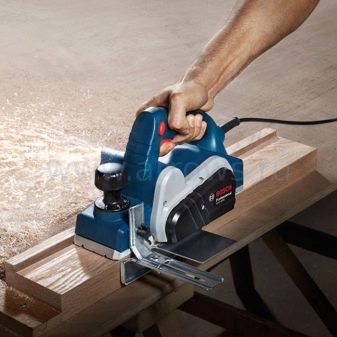
Belt and disc machines for grinding, which is carried out by means of vibration.
These tools are necessary to prepare the wood element for polishing followed by the application of a protective varnish.
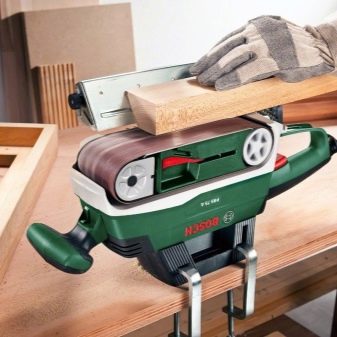

Manual
There are quite a few hand tools for working with wood materials, and they are divided into several groups, which include a certain number of items. So, as a separate group, it is worth considering chisels, flat and rounded models of which have their own numbering and designation.
- The first number is a chisel, intended for general work, making straight cuts and performing medium-sized finishes. Its width is 12 mm and its shape is straight and flat.
- Chisel No. 2 also has a width of 12 mm and is used for trimming small parts and performing some work. Its oblique flat shape allows for more precise movement and more accurate workpiece details.
- For delicate artwork, the cerazik is ideal - a rounded chisel with a width of only 3 mm, which is also designated number 3.
- Chisel No. 9, which has a straight rounded shape and a width of 25 mm, will help to perform fast cutting and facilitate general work.
- Chisel # 10 is round and 8mm wide, making it a very suitable option for some general and grooving work.
- Curved 9mm model # 14 is ideal for cutting bends and flat parts.
- Chisel No. 21 also has a width of 9 mm, designed for making rounded grooves with their subsequent finishing. This model has a spoon shape and is also called cranberry.
- The 12 mm wide cranberry spoon is the most suitable tool for creating a more embossed, slotted and curved surface.
- And the forged right angle number 39 is designed for cutting letters.
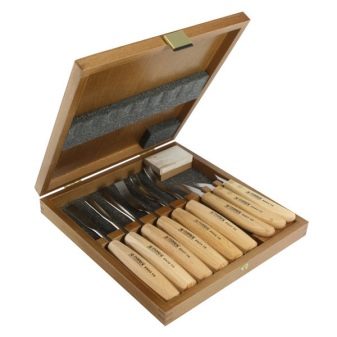
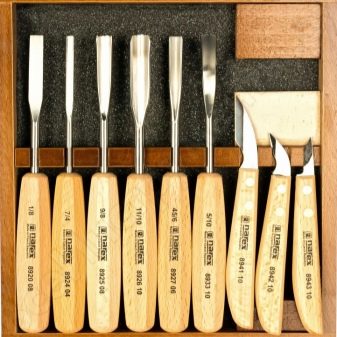
There is also a special professional set of chisels, consisting of only 7 items, which are necessary to perform more delicate and more complex work:
- an angular spoon chisel of a flat shape, designed for left-hand and right-hand work (depending on the type);
- cranberry, which has a reverse bend;
- spoon chisel model, equipped with a stepped bend;
- a chisel, the shape of which resembles a fish tail (the name of this tool is appropriate);
- wing-shaped corner;
- a curved tool having a rectangular groove;
- spoon model equipped with a rounded rectangular groove.
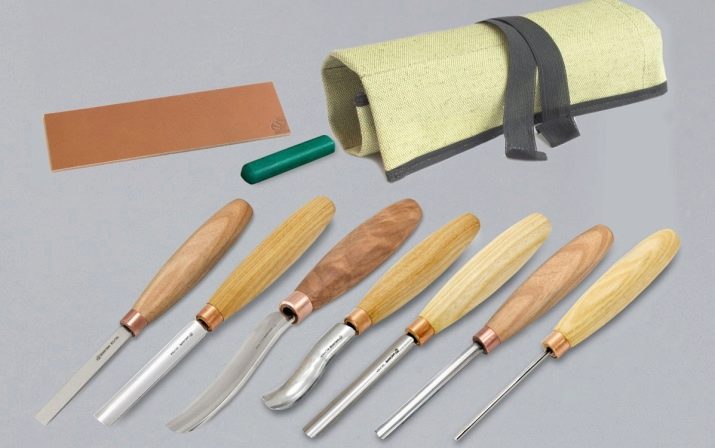
In addition to all the listed types of chisels, other tools are also used, without which the process of woodcarving will simply be impossible or noticeably complicated.
For example, knives for detailing elements. Three types of this tool are usually used: a folding model, a product with a conventional fixed blade and with a replaceable cutting element.
Hand saws are essential for sawing bent parts, removing excess workpiece and trimming edges.
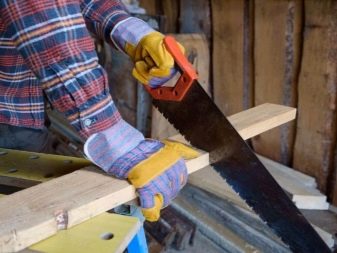
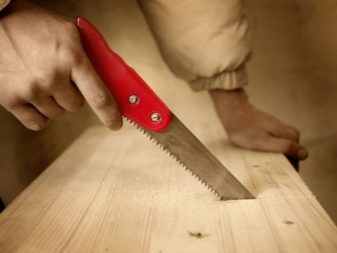
To make it easier to peel off the bark and remove excess wood, it is best to use a scraper. Most often, the tool is used to make wooden dishes.
The plane is perfect for curly processing of workpieces. Multi-step tooling and curved teeth will help you shape your piece.
Abrasives, plows, scrapers, hand-operated rotors and drills, hammers and some turning tools are actively used. You may also need devices such as mallets, adzes and embossings to make it easier to work with chisels and knives.
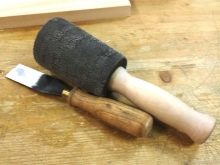
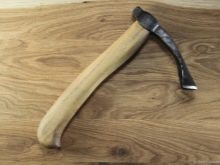
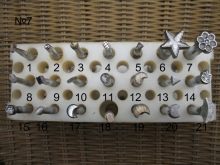
Manufacturers
When choosing a tool for carving wood, you need to pay attention not only to the model, type and individual characteristics, but also to the manufacturer of the offered product. In some cases, it is this factor that is the most significant and provides the most complete information about the quality of the tools.
For example, modern Japanese inventory has very good characteristics, since manufacturers do not skimp and do not save on the quality of materials. Moreover, the cost of tools remains at an average level, so they are affordable for craftsmen with different skills.
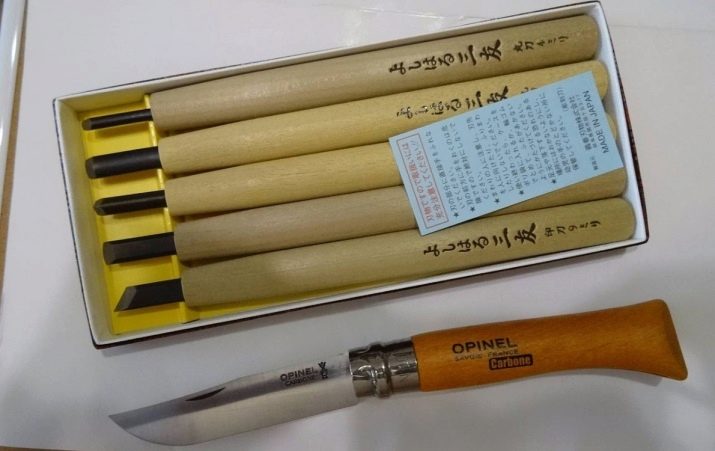
The Czech company Narex produces high quality tools, the metal part of which is made of a special stainless steel alloy. The material does not bend, is resistant to temperatures and, if properly sharpened, remains sharp for a long time.
Instruments made in Germany, Sweden, Russia and Poland are also famous for their good quality.
But Chinese production should be avoided, since it is in this country that low quality fakes are made and metals that are not distinguished by strength are used.
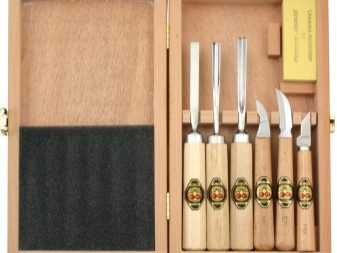
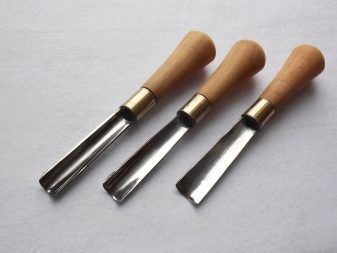
Which to choose?
With a wide range of different products, including tools for wood carving, it is quite difficult to choose a good set and not be mistaken. Of course, you can always ask a shop assistant for help. But what if you buy a product online or expect a lower price segment than they are trying to impose on you?
Consider a few simple tips to help you make your choice easier and avoid common mistakes.
- It is not necessary to chase expensive tools, since the high cost does not at all endow them with the best qualities. Attention must be paid first of all to the characteristics.
- The main materials used to make quality knives and chisels are steel and wood. In the presence of other metals and plastic in the characteristics, you should seriously think about the quality and reliability of such a product.
- In order for you to be comfortable working with the tool, you need to hold it in your hands and perform several manipulations that imitate working with wood. Based on your feelings, you can choose a product with a handle of the appropriate size.
- The power tool must be selected especially carefully, making sure of the quality of the wires and the reliability, as well as the integrity of the case.
- There are many kits for beginners, but their functionality is not always similar to the tools for experienced professionals. Therefore, it is better to turn your attention to a quality kit for craftsmen with any experience in order to avoid complications and overpayments.
- The same applies to gift sets, since the quality of most of them can be rather questionable, unless, of course, we are talking about tool sets of trusted brands, the contents of which remain unchanged, but only the packaging is different.
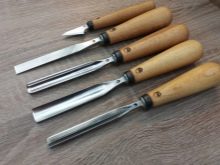


How to sharpen?
In order for your instruments to stay in good condition for longer and still perform as well as possible, you need to take care of them. Processing and sharpening are the main steps in maintenance. But if processing can be done easily at home, then what to do with sharpening?
Regular access to specialists can be tedious and very costly, so it is recommended to learn how to sharpen your tools yourself, at home.
First of all, it is worth identifying what is needed in order to sharpen woodcarving tools:
- fine-grained abrasives;
- donkeys with oil or water;
- to simplify the process, you can use electrical tools for sharpening.

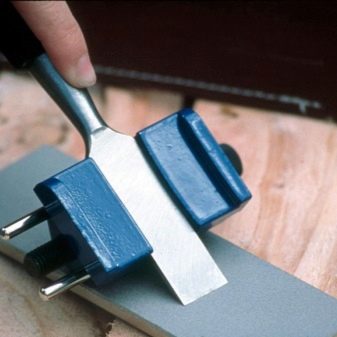
The work is done in several stages.
At the first stage, the blade is sharpened to form small burrs on the surface.
In the second step, these burrs are smoothed out and the point becomes smoother.
At the third stage, grinding is performed, in which the surface of the tool acquires perfect smoothness and mirror shine.
The final stage is the processing of the device and the final check of the point on the wood surface.

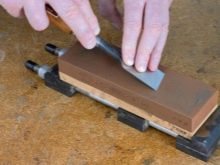
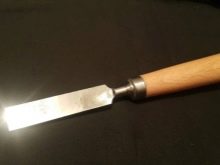
How to do it yourself?
Often, many professionals, not wanting to work with a purchased tool, prefer to make it with their own hands. For beginners, this process may seem rather difficult, but if you follow the step-by-step recommendations, then you can easily cope with the task.
- First of all, it is necessary to determine the parameters of the products and make drawings.
- If you have experience in working with metals, then it will not be difficult for you to make a tip of the desired shape by cutting it out of a large sheet or melting it using a special mold.
- It is recommended to customize the dimensions of the cutting part individually for yourself, taking into account the existing skills.
- Making a wooden handle from a craftsman, for whom woodworking is not something new and unknown, will not be difficult. Its shape and size should also be as comfortable as possible for you.
- Further, the homemade tip must be fixed on the handle so that even with strong pressure it does not jump off, since this can be quite traumatic.
- To keep the blade tighter, you can screw the end tightly into the handle or use a special adhesive for metal.
- After that, you need to grind the metal part and treat the wooden handle with oil compounds and varnish.
- After the products have dried and the tool has been sharpened, you can safely use it in your work.
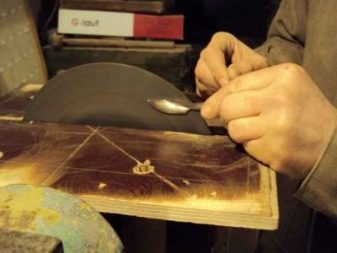

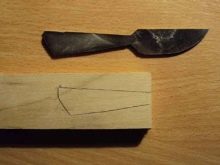
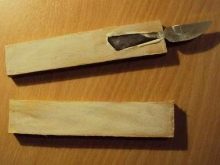
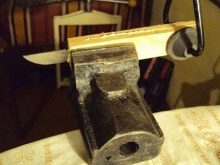
Tips for beginners to do wood carving in the next video.








